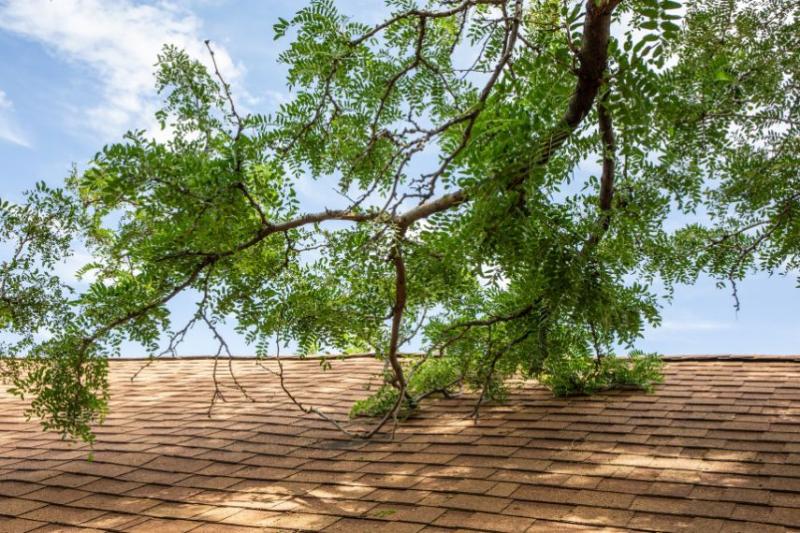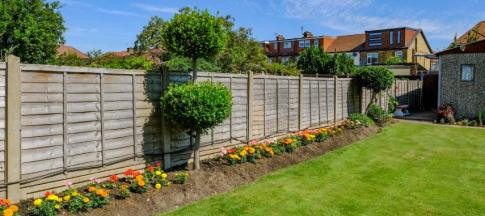
Trees are often a welcome addition to our gardens, bringing both privacy and shade. But like any living thing, they can wreak havoc if not appropriately looked after.
Do trees make taking out home insurance harder?
Admiral won’t refuse to insure you because of trees near to your home, and most trees are not a concern at all.
We’ll only ask about very tall trees (i.e. those over 10m in height) located close to your property; if it’s deemed that your home is at risk from damage by these trees, your premiums may be increased.
Am I insured against falling trees and branches?
Yes, your home insurance will cover against damage (whether to the buildings or its contents) caused by falling trees or branches. The exception is if the damage is caused during maintenance (e.g. by a tree surgeon).
The cover also includes the cost of removing any part of the fallen tree that’s above ground.
What to do if a tree falls on your home
Falling trees can kill, and if one has fallen onto your home it is wise to evacuate immediately. Call the Emergency Services and ask for the fire brigade.
Contact your insurer immediately so they can begin making provisions for alternative accommodation and begin the process of appraising damage. A key priority will be weatherproofing your home while more permanent repairs are resolved.
Trees and subsidence
Subsidence typically occurs when the ground beneath your home shrinks. Only homes built on clay soil are susceptible to subsidence, and trees can make the problem worse.
If tree root systems suck too much water out of the soil, such as during periods of drought, the sponge-like soil can shrink and literally fall away from beneath your home. This can cause serious damage to your property, including cracked walls and other structural damage.
What is heave?
Heave is the opposite of subsidence.
Trees, and established trees in particular, play an important part in removing water from the ground around your home. Over time, the local water table can come to rely on trees to help it keep its delicate balance.
If trees are suddenly removed, this outlet for water is taken away. This can flood the earth around your home from the inside out, ‘heaving’ your home up and out of the ground. The effects are similar to subsidence, and fixing it can be even harder.
You should think carefully and consult an arborist before removing any established tree close to your property, and especially any tree that pre-dates your home.
Are particular types of trees more of a problem?
Trees with finer and more extensive root systems are more likely to cause a problem. This includes poplar, willow, elm and oak trees.
As a general rule of thumb for planting a new tree near your home, plant it at a distance that is equal to the tree’s expected height once fully grown.
Should I remove a tree close to my house?
Your home insurer shouldn’t ask you to remove a tree from your property unless they believe it will cause damage.
The decision to remove a tree is serious and you may find that the tree is protected by a preservation order, legally preventing you from removing it.
Can I cut down my neighbour’s tree?
If you are concerned about a neighbour’s tree damaging your property, you are legally permitted to trim overhanging branches as long as you return them to their rightful owner (seriously). The exception is for trees with preservation orders, which you should not trim. In this instance, speak to the Citizens Advice Bureau.
It’s usually a good idea to tactfully talk with your neighbour before trimming, as it could lead to a dispute. Disputes between neighbours can become bitter and make life very difficult for everyone involved.
If you find yourself in a neighbour dispute, Family Legal Protection (an optional extra on many home insurance policies, standard on others) can cover the legal expenses involved.
My neighbour’s tree has fallen on my home
If a tree on your neighbour’s property has fallen onto yours, you likely won’t be able to claim for the damage on their policy.
Home insurance is not like car insurance, where you can recover losses from a third party if you’re not at fault.
Your neighbour’s insurance covers their property, not yours. You may, however, be able to claim against their policy if you can prove negligence – say, if the tree was known to be unsafe and they failed to act.
Otherwise, you’ll need to claim against your own insurance policy. You will probably have to pay an excess, which you can attempt to recover from your neighbour through the small claims court.
Buying a house with nearby trees
You should always get a structural survey of any home before buying, but especially if it has established trees nearby. This will tell you if the property is likely to be affected by the trees’ future growth.
Your conveyancer will be able to tell you if any nearby trees are protected by preservation orders.

